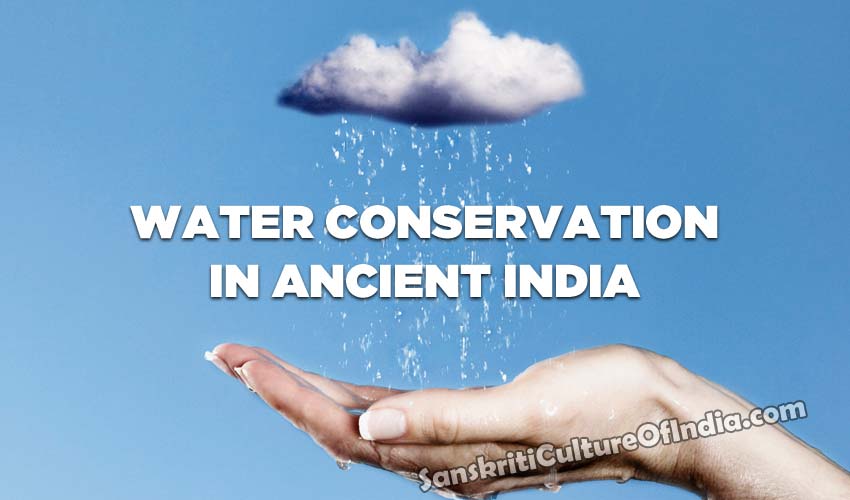India was a cradle of civilization in the ancient world.
An interesting feature of all ancient civilization was that its inhabitants realized the tremendous value of water in human life. Each of these civilizations was located on the banks of a river (s) or within a convenient distance from the sea. This was to ensure a perennial supply of water for day to day activities.
The Rig Veda
It is indeed astonishing to realize that at the dawn of civilization, the humans understood the significance and importance of water. Apart from cooking, personal cleanliness and hygiene, water was vital for cultivation and irrigation of crops. In that early age, water was a major mode of transport; with further progress and development water again became an invaluable source of food as well as trade and commerce.
According to ancient Hindu beliefs, the universe, the cosmic world comprises five basic elements:
- kshiti (earth),
- apah (water),
- teja (light/heat),
- marut (air) and
- vyoma (ether/space).
According to the Rig Veda, all life on this planet is evolved from apah (water). Water is usually acknowledged as the basic need of all living creatures upon the face of this earth. There are copious references in Vedic literature about medicinal properties of water, uses of water, last but not the least the importance of conservation and preservation of water. Pure water is termed as ‘divyajal’ due to its following properties: Sheetam (cold to touch), Suchihi (clean), Shivam (replete with useful minerals and trace of useful elements), Istham (transparent), Vimalam Lahu Shadgunam (its acid-base balance should not exceed normal limits).
Water Conservation
The Indus Valley Civilization, that flourished along the banks of the river Indus and other parts of western and northern India about 5,000 years ago, had one of the most sophisticated urban water supply and sewage systems in the world. The fact that this civilization was well acquainted with hygiene and sanitation is evident from the covered drains running beneath the streets of the ruins at both Mohenjodaro and Harappa. Yet another excellent example is the well-planned city of Dholavira, in Gujarat.
Though nature has blessed the Indian landmass with a large number of perennial rivers, unlimited rainfall in most areas, yet the pragmatism and prudence of the ancient seers, scholars and learned individuals led them to ponder over the issue of water conservation.
One of the oldest water harvesting systems is found about 130 km from Pune, along a place known as Naneghat, situated in the Western Ghats. A large number of tanks were cut in the rocks to provide drinking water to tradesmen who used to travel along this ancient trade route. Each fort in the area had its own water harvesting and storage system in the form of rock-cut cisterns, ponds, tanks and wells that can be seen in use even today.
In ancient times, houses in the western part of Rajasthan were constructed in such a way that each had a rooftop water harvesting system. Though scanty, rainwater from these rooftops was directed into underground tanks. This system can be seen in use even today in all the forts, palaces and dwelling houses of the region.
Earthen pipes and tunnels, (placed underground) to maintain the flow of water besides transporting it to distant places, are still functional at places like Burhanpur (Madhya Pradesh), Golconda (Andhra Pradesh), Bijapur in Karnataka, and Aurangabad in Maharashtra.
Water Purification
Purification of ground water in the dug wells is dealt with at length in Brihat-Samhita written and compiled by Varahamihira. He suggested an infusion be made from a mixture of powdered herbs namely Anjan, Bhadramustha, Khas (vetiver), Amla (emblica officinalis, gooseberry) and Nirmali (bhui amla / kataka) in water, which in measured quantities was to be added to water in the wells for purification. Detailed practical guidance for water purification is given in the famous treatise of Indian physician, Sushruta. Sushruta disclosed that muddy water could be purified with herbs and naturally occurring substances; Nirmali seeds, roots of Kamal (lotus/water lily), rhizomes of algae and three stones, Gomed (garnet) Moti (pearl) Sphatik (quartz crystal) were used. He recommended the disinfection of contaminated water by exposing it to the sun or immersing red hot iron or hot sand in it.
The ancient Indian custom of storing drinking water in brass vessels for good health has now been proved scientifically by researchers. Microbiologists affirm that water stored in brass containers can help combat many water-borne diseases and should be used in developing countries rather than their cheaper counterparts i. e plastic containers.
The scientific principle involved in this is the fact that any metal or alloy tends to disrupt biological systems. The element acts by interfering with the membranes and enzymes of cells; for bacteria, this can mean death. Pots made of brass, (an alloy of copper and zinc), shed copper particles into the water that they contain. But the minuscule amount that circulates into the water, while destroying the bacteria cannot harm human beings.











